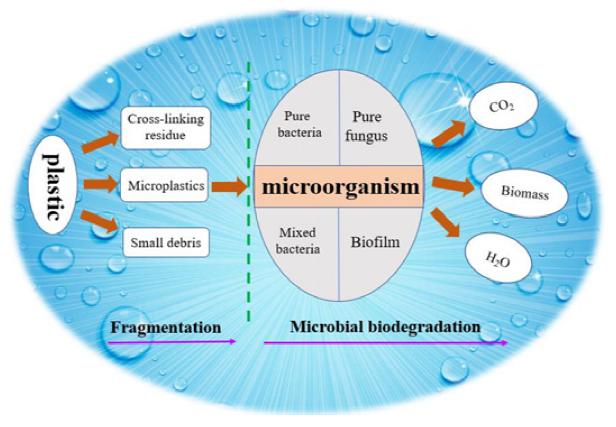Microplastic (MP) pollution is a significant environmental concern due to the persistence ofMPs and their potential adverse effects on biota. Most scientific studies have examined the distribution, ingestion, fate, behavior, amount, and effect of MPs. However, few studies have described the development of methods for the removal and remediation of MPs. Therefore, in this review, we summarize the recent literature regarding the microbialmediated degradation of MPs and discuss the associated degradation characteristics and mechanisms. Different types and combinations of microorganisms, such as bacteria, fungi, bacterial consortia, and biofilms, that can degrade different MPs are categorized. This article summarizes approximately 50 recent papers. Twelve and 6 papers reported that bacteria and fungi, respectively, can degrade MPs. Nine articles indicated that bacterial consortia have the ability to degrade MPs, and 6 articles found that biofilms can also utilize MPs. Furthermore, to evaluate their associated degradation effects, the corresponding structural changes (i.e., macro size, surface morphology, and functional groups) in MPs after microbial degradation are examined. In addition, MP biodegradation is affected by microbial characteristics and environmental factors; therefore, the enviro mental factors (i.e., temperature, pH and strain activity) influencing MP degradation and the associated degradation effects (i.e.,weight loss, degradation rate, and molecular weight change) are generalized. Furthermore, the mechanisms associated with the microbial-mediated degradation of MPs are briefly discussed. Finally, prospects for the degradation of MPs using microbes and future research directions are envisioned. This review provides the first systematic summary of the microbial-mediated degradation of MPs and provides a reference for future studies investigating effective means of MP pollution control.
Keywords: Microplastics, Microorganism, Degradation behavior, Degradation mechanism
